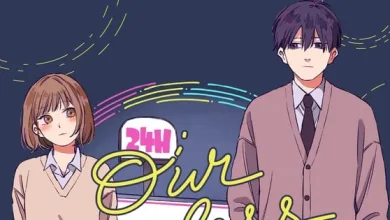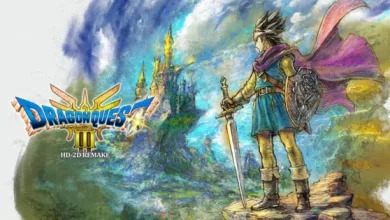The Fable Episodes 1-25 Anime Streaming Review – Review

What is it about manga featuring ex-criminals attempting to go straight that attracts anime productions with such terrible animation quality? 2021’s The Way of the Househusband became meme-worthy for its almost total absence of actual animation, more akin to a cheap-looking motion comic. Frankly, it was an embarrassment. While The Fable doesn’t quite hit such aesthetic lows, at times, it really, really tries. This may be the ugliest, most static anime I’ve watched in years. In episode 24, the opening sequence is a still frame featuring two stock-still characters that stay frozen for what feels like half a minute while dialogue and sound effects continue to play. I wondered if my stream had crashed, but no, it was merely a sign that motorcycle-riding hoodlums had presumably stolen the entire episode’s budget.
This catastrophic failure of presentation is a real shame because otherwise, The Fable is a damned good show. It’s based on a highly-regarded 22-volume manga (with an ongoing nine-volume sequel), winner of the 41st Kodansha Manga Award in the General category. It’s already been adapted as two live-action movies, both available to stream in English. Tezuka Production’s bargain basement adaptation struggles to do justice to what it is: a truly entertaining, thoroughly bizarre crime comedy-drama.
The Fable‘s more realistic-looking character designs don’t lend themselves to typical attractive anime aesthetics. This is a world of brutal thugs and shady underground crime syndicates, so it was never going to look pretty, exactly. There are only three female characters of note. While in-world they’re regarded as attractive, the art style emphasizes deliberately unpleasant expressions – it’s unlikely we’ll get Figmas or Nendoroids of these folks. That’s not a complaint, though – this is an adult story with adult characters and problems. While Akira Sato is the main character, The Fable is just as much the three heroines’ story as his.
Sato himself is an odd duck, to say the least. He’s a genius-level assassin who takes his role deadly seriously, executing his orders (and targets) with ruthless efficiency. His expression is almost always wholly unreadable, and his vocal delivery is deadpan. However, instead of boring, this makes him intriguing in a world full of forceful yakuza. Sato’s idiosyncrasies only become more endearing with time – like how he repeatedly taps his forehead while making a bizarre brain-dead expression while he “switches modes.” He’s obsessed with local comedian/light entertainer and actor “Jackal,” a mulleted D-list celebrity who appears in cheesy commercials and misbehaves in a low-budget TV soap opera. Poor Sato doesn’t understand that listing his main interest as “Jackal” on his job application resume will not likely win him employment. He does end up finding a job as a bicycle courier for a graphic design company entirely because he helps out his female neighbor, Misaki. Sato’s almost disturbingly childlike, innocent drawings become a money-spinner for the business in an unexpectedly sweet running joke.
Misaki is the main heroine of The Fable‘s first extended arc – she’s a hard-working single woman, holding down several jobs to pay her family’s debts and eventually opening her own shop. Sato seems to empathize with Misaki’s noble work ethic and intervenes when a local yakuza attempts to blackmail her into forced prostitution. The Fable doesn’t shy away from the dark, exploitative side of organized crime, especially in relation to the mistreatment, imprisonment, and industrialized sexual abuse of young, vulnerable women. While Sato, as a hitman, is a “bad guy,” The Fable‘s antagonists are truly despicable, and watching them get their comeuppance is extremely satisfying.
The second arc follows Hinako, another young woman who has used a wheelchair since a car accident several years prior. In addition to her disability, she’s repeatedly raped by the despicable Utsubo, her “guardian” and killer of her parents. Utsubo is a particularly chilling antagonist – predatory, manipulative, and calculating. His main business is extortion, and his obsession with Sato threatens to ruin the lives of everyone in the show. Sato’s relationship with Hinako is extremely sweet, possibly because he feels responsible for the accident that damaged her legs. Sato isn’t a man who emotes with his speech or facial expressions, but his actions are controlled, brutal, and efficient.
My favorite character has to be Sato’s “sister,” Yoko. In a production with such poor visuals, it’s a blessing that voice actor Miyuko Sawashiro’s incredible performance not only carries the show but almost single-handedly makes it worth experiencing. Her unhinged cackling, screeching, and whining perfectly complement Yoko’s disturbing facial expressions. Yoko is a woman who haunts bars, waiting for poor, unsuspecting men to pick her up. She then relentlessly toys with their egos, goading them to get ever more drunk until they collapse, vomit, or void their bowels (sometimes all three). Her only interest in men appears to be the sheer exuberant joy she experiences by humiliating them. Of course, the fact she’s almost as deadly as her “brother” helps make her an incredibly memorable character. At one point, Sato quips that “alcohol is Yoko’s staple food,” and I can believe it.
Other side characters, like permanently exasperated “Captain” Ebihara and Sato’s hitman wannabe fanboy Kuro, are fun, too. Kuro follows Sato around like a puppy dog, though he soon comes to regret this in a truly bizarre interlude where he and Sato visit the mountains for a weekend hunting trip. Sato’s survival skills are… formidable, Kuro’s… not so much. Strange comedic skits like this, interspersed between hard-boiled crime drama, make The Fable such a unique show. At turns utterly hilarious, before quickly becoming unbelievably tense and dramatic, I was never once bored by The Fable, even sometimes forgetting how ghastly the animation was.
Music is a mixed bag. The high points are two bangers by funky hip-hop band ALI (known for excellent tracks “Wild Side” for BEASTARS and “Lost in Paradise” for Jujutsu Kaisen) – first OP “Professionalism” is especially funky and catchy. In contrast, the second ED, “Beyond,” is an energetic, upbeat duet with singer MaRI. UmedaCypher provides the more rap-heavy first ED “Odd Numbers” and second OP “Switch,” but rap isn’t my particular choice of musical entertainment, and apart from a really cool baseline groove in “Switch,” I wasn’t too impressed. However, each track suits the grimy, crime-based vibe of the show very well.
Overall, despite the desperately substandard animation quality, The Fable is a tense, funny, rewarding comedy-drama that I feel has been unfairly overlooked, not only by an obscure choice of streaming service but by fans unwilling to look past its ugly exterior. Just like leading man Sato, he’s not much to look at, but there’s a lot going on underneath.
Source link
#Fable #Episodes #Anime #Streaming #Review #Review


